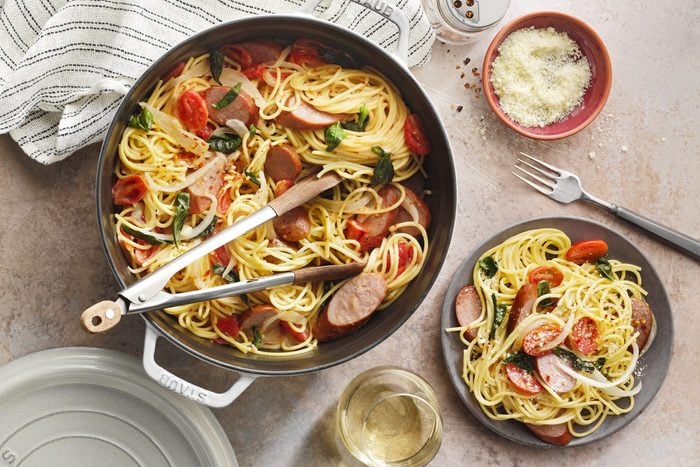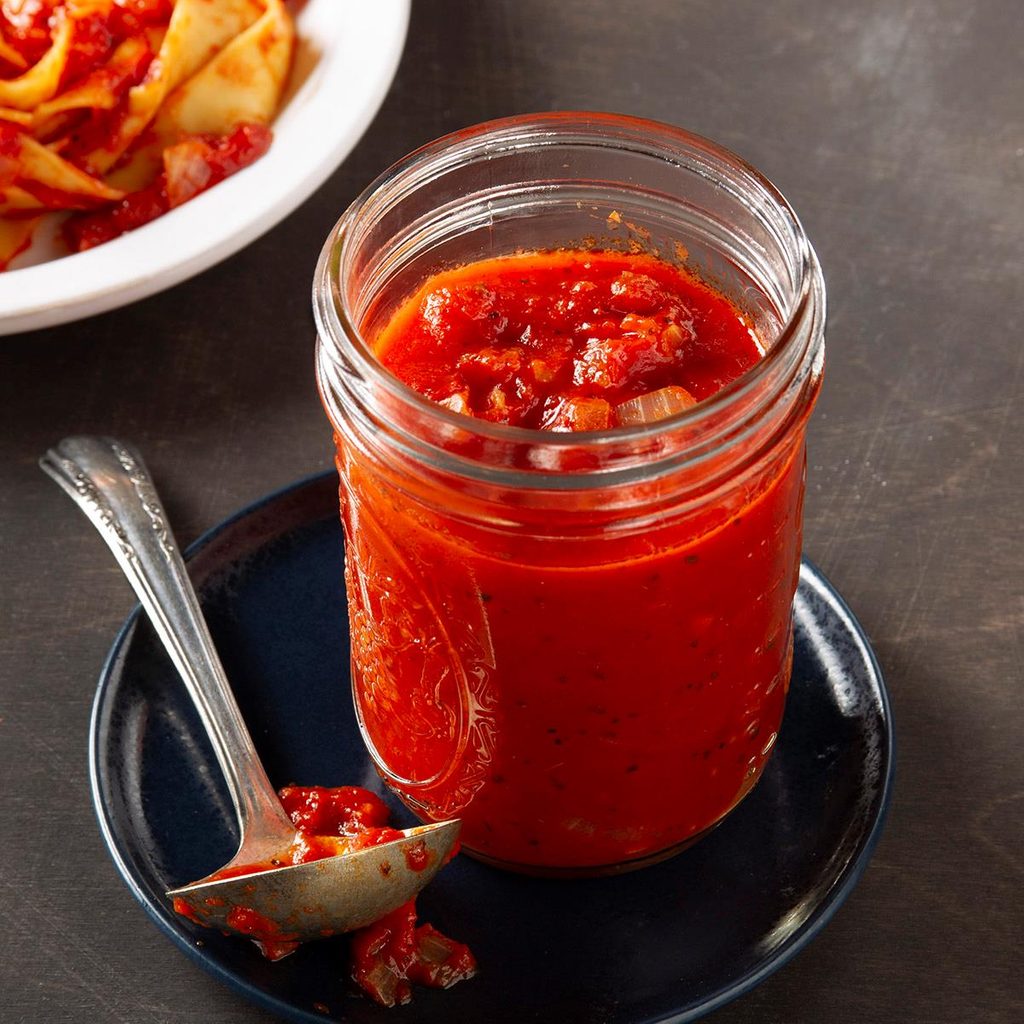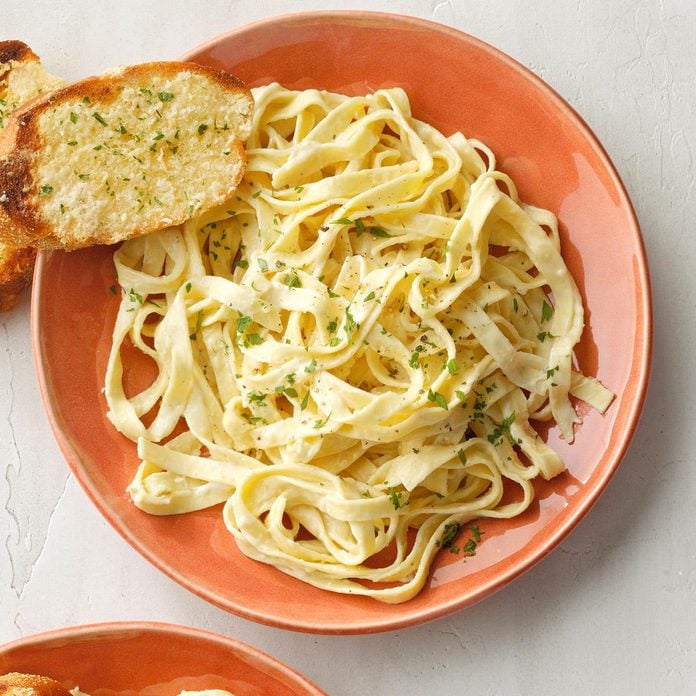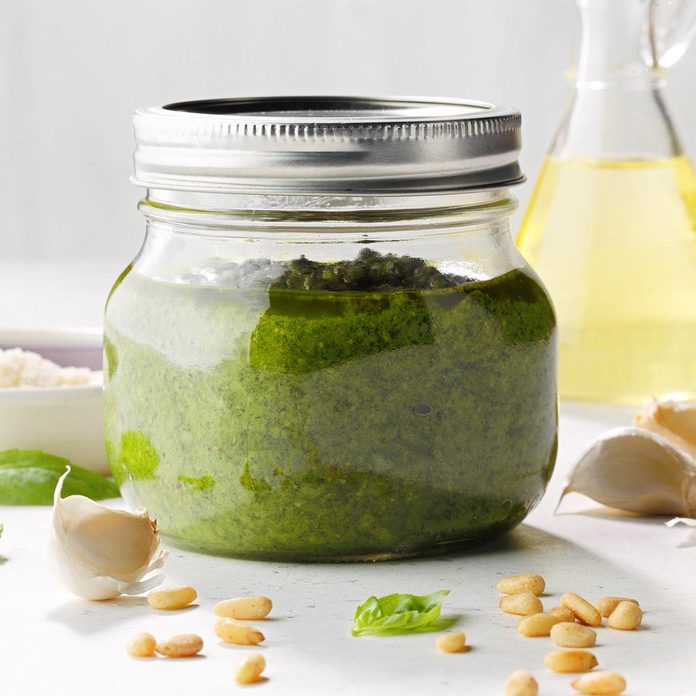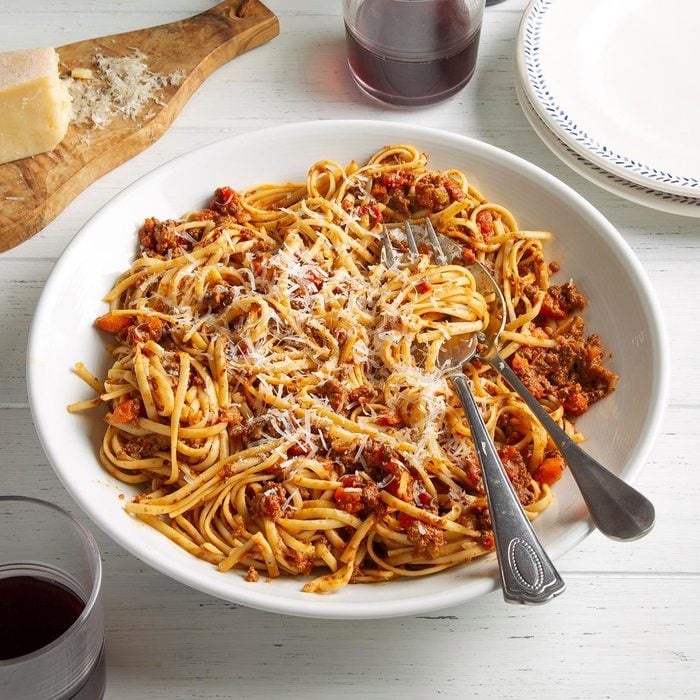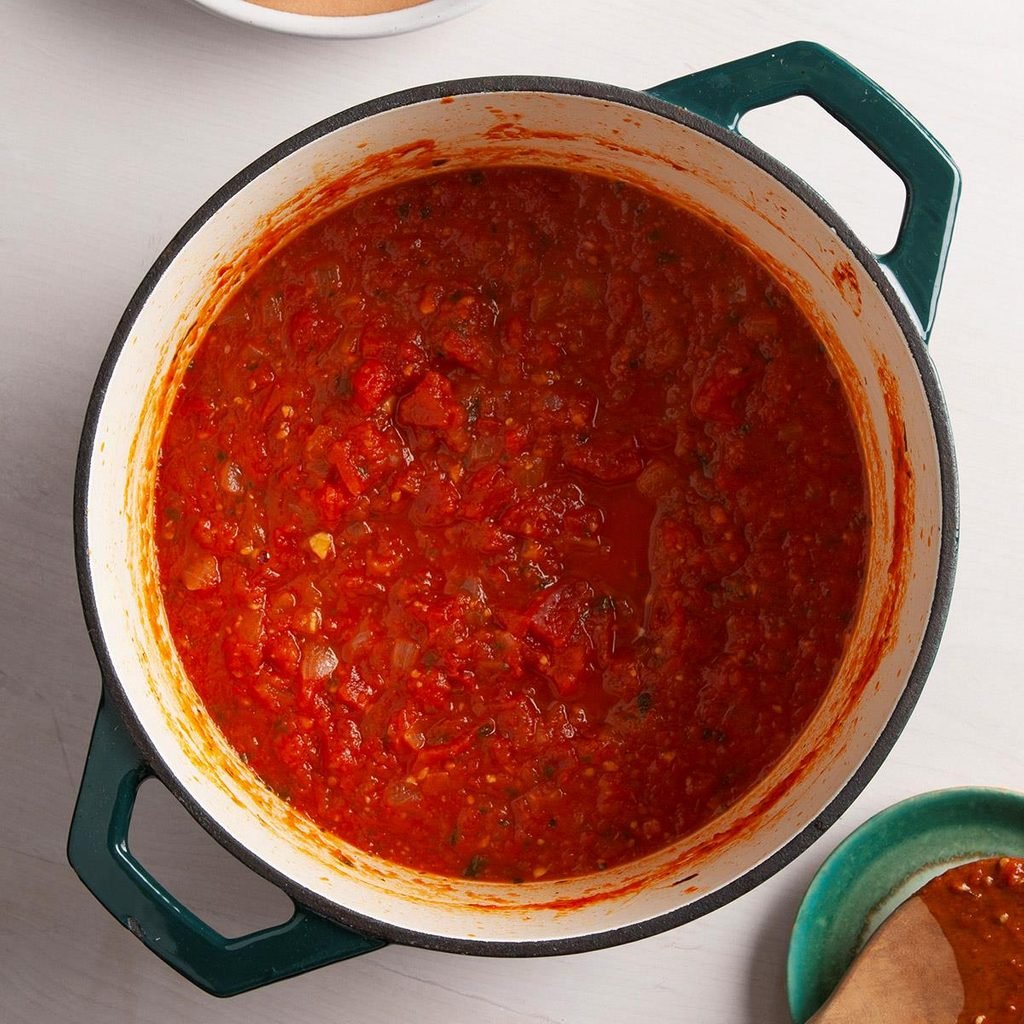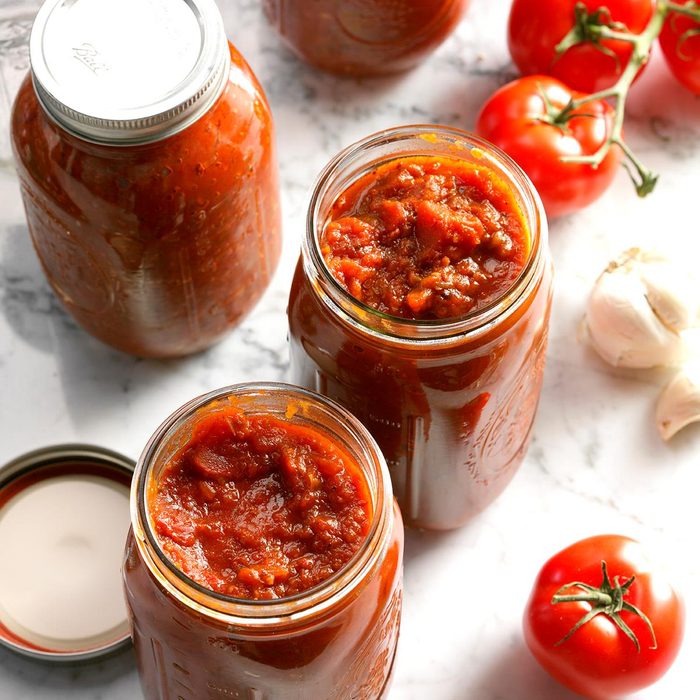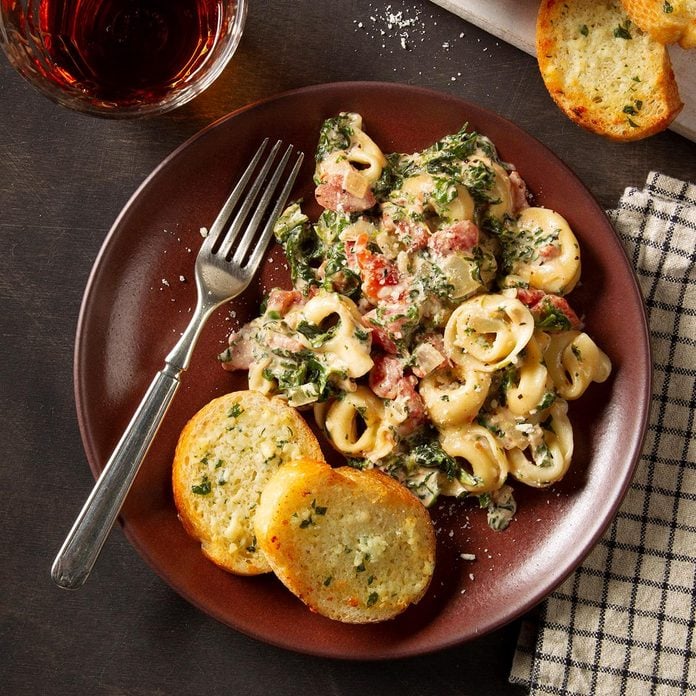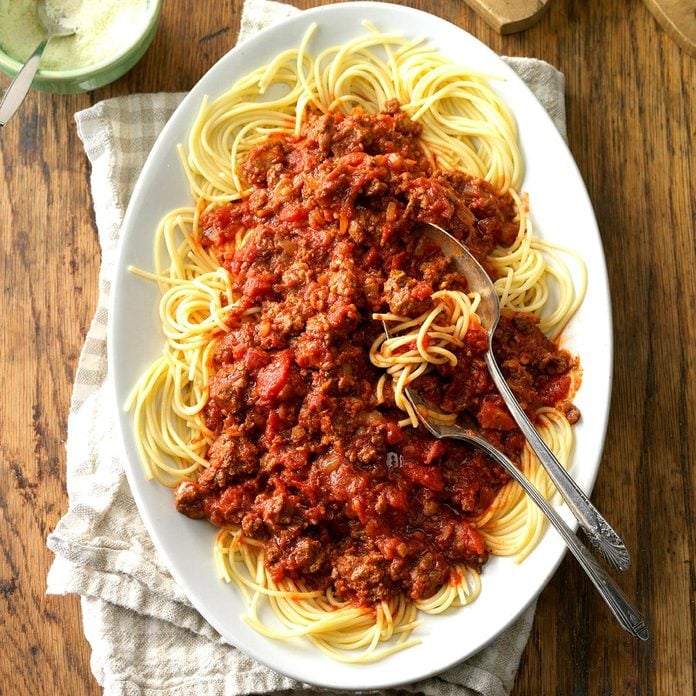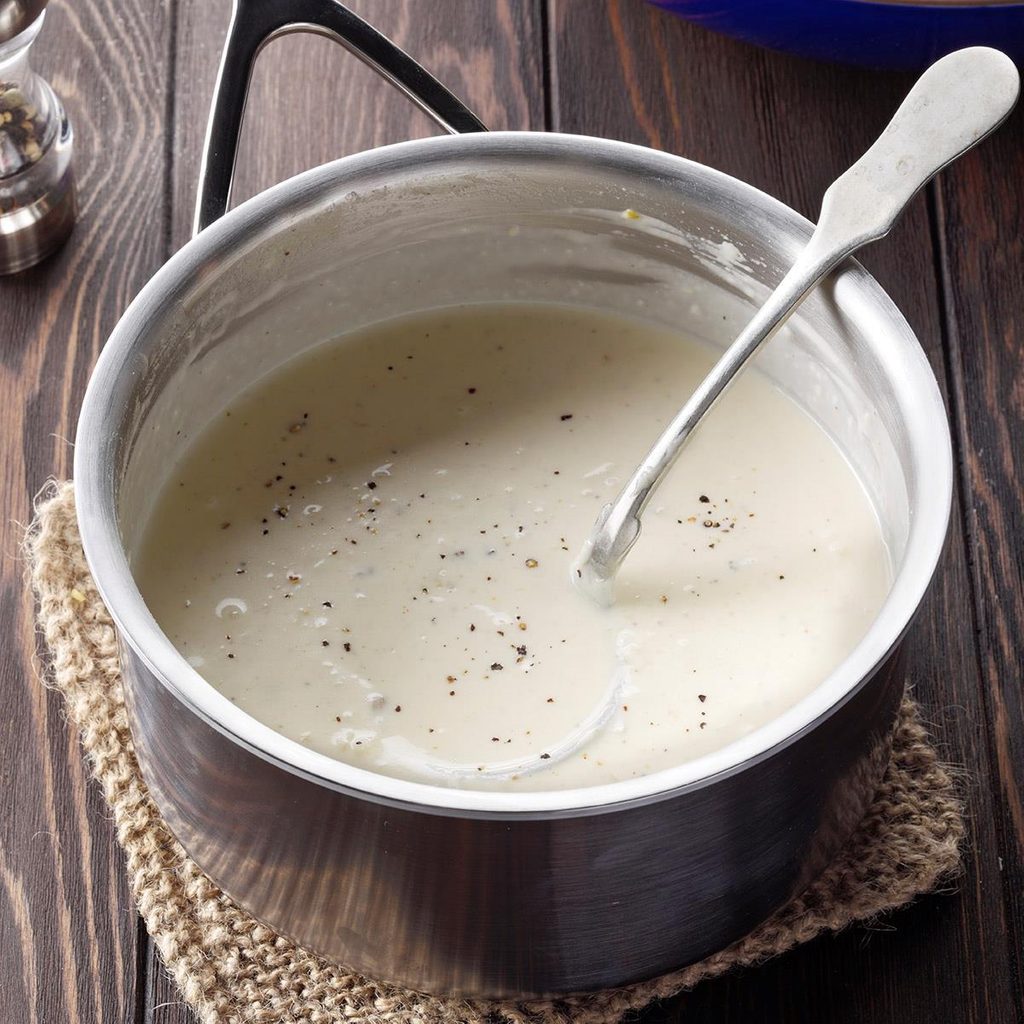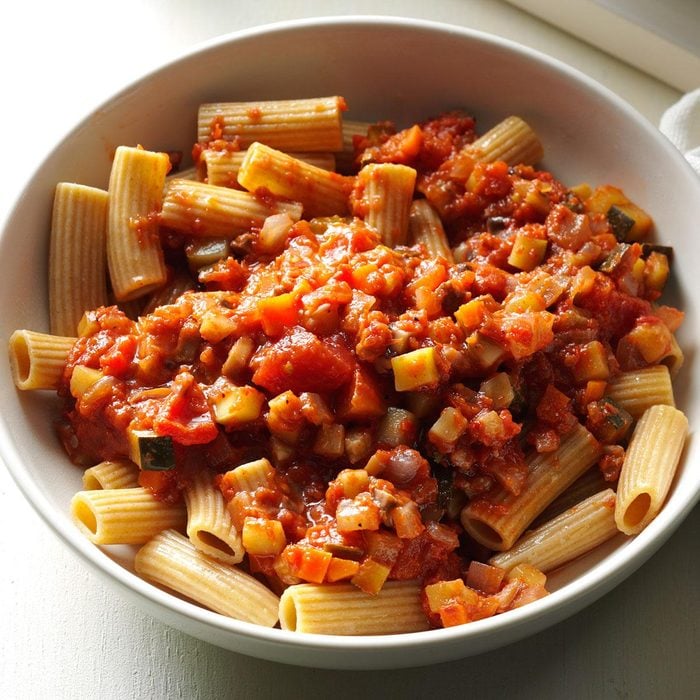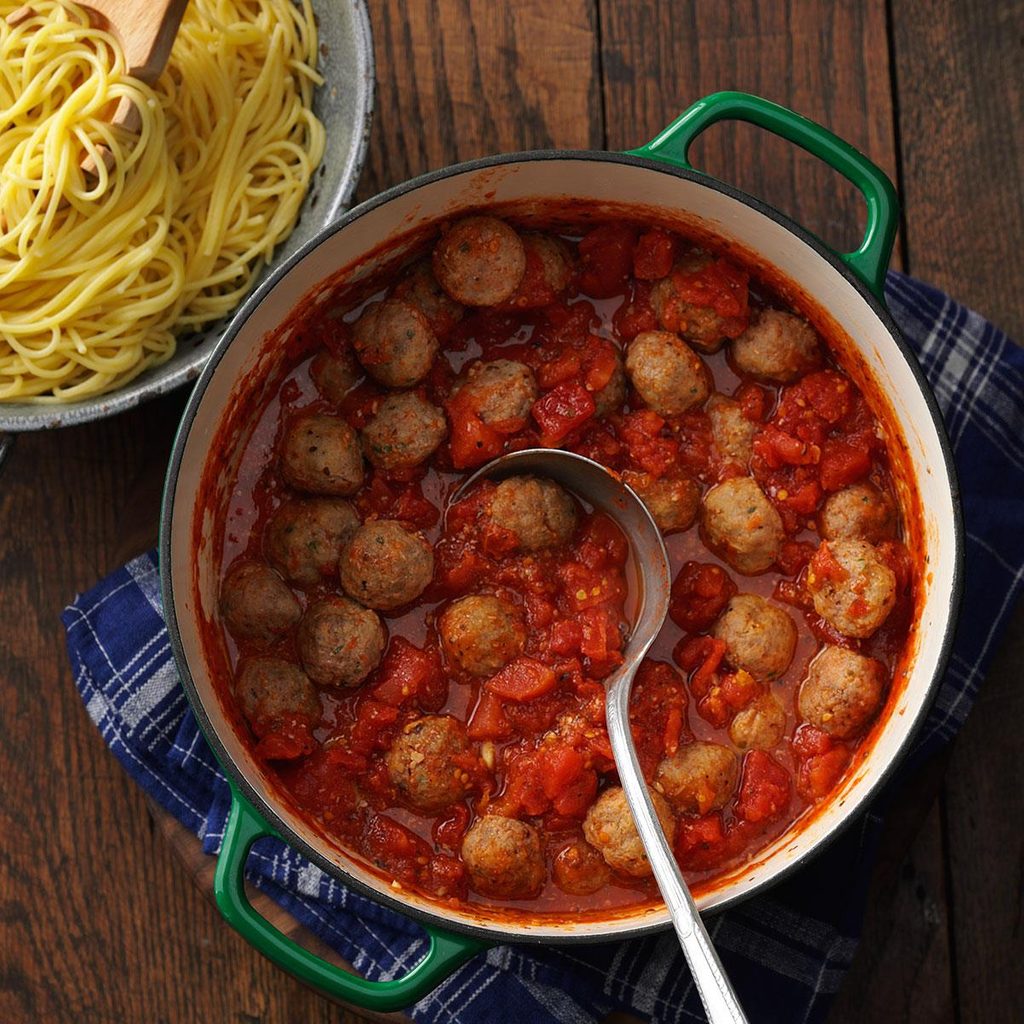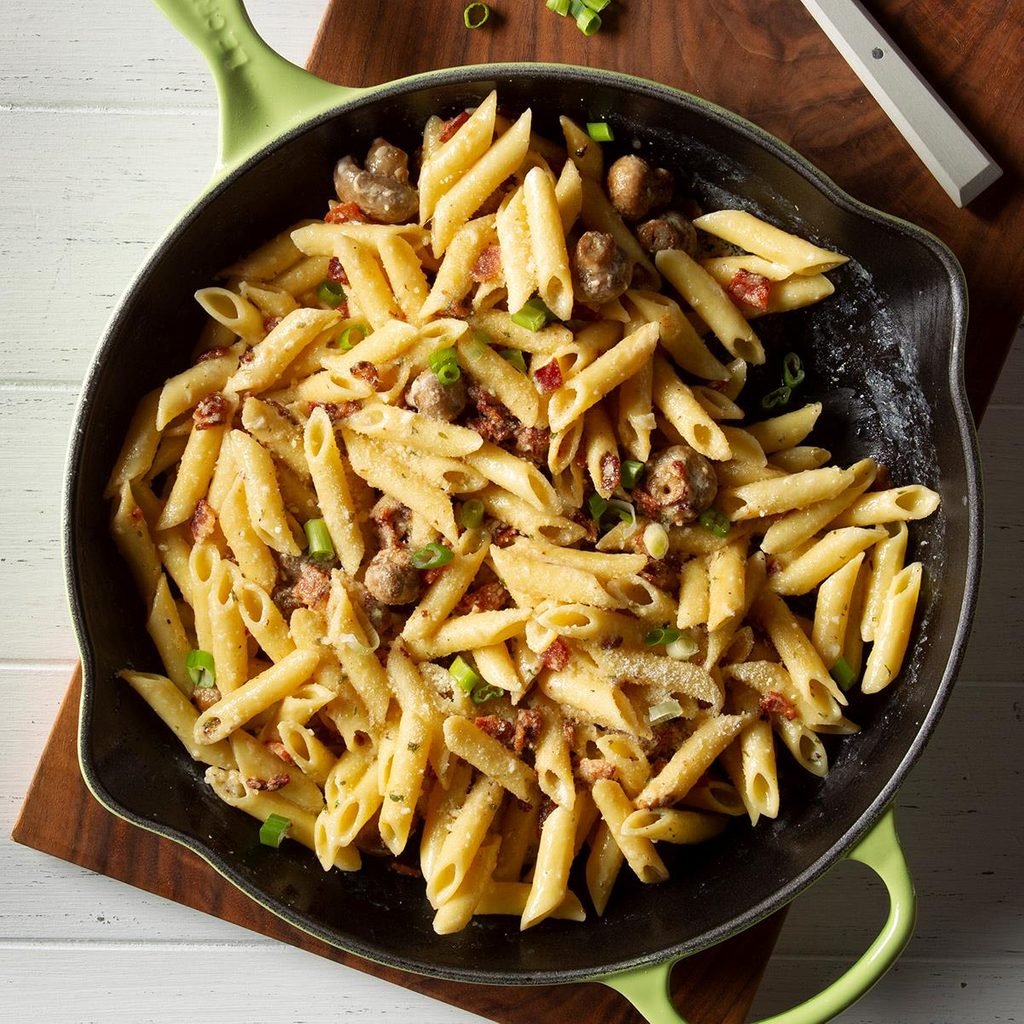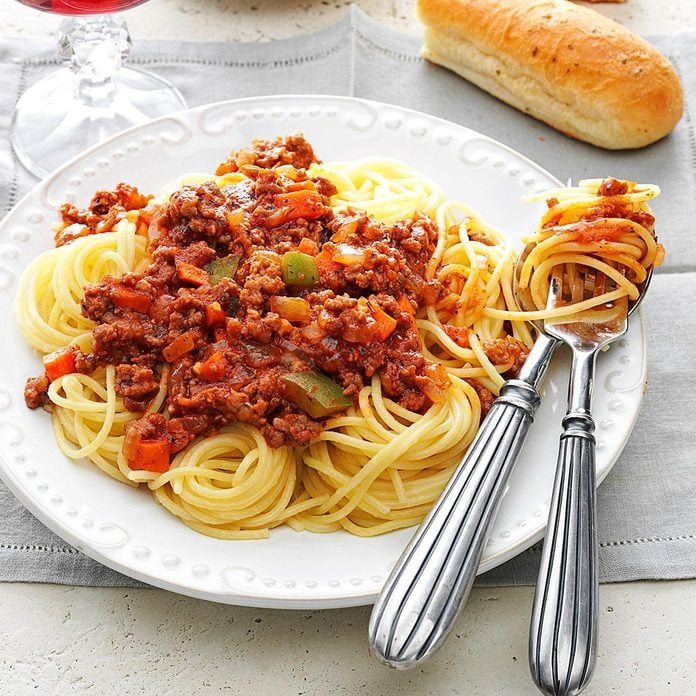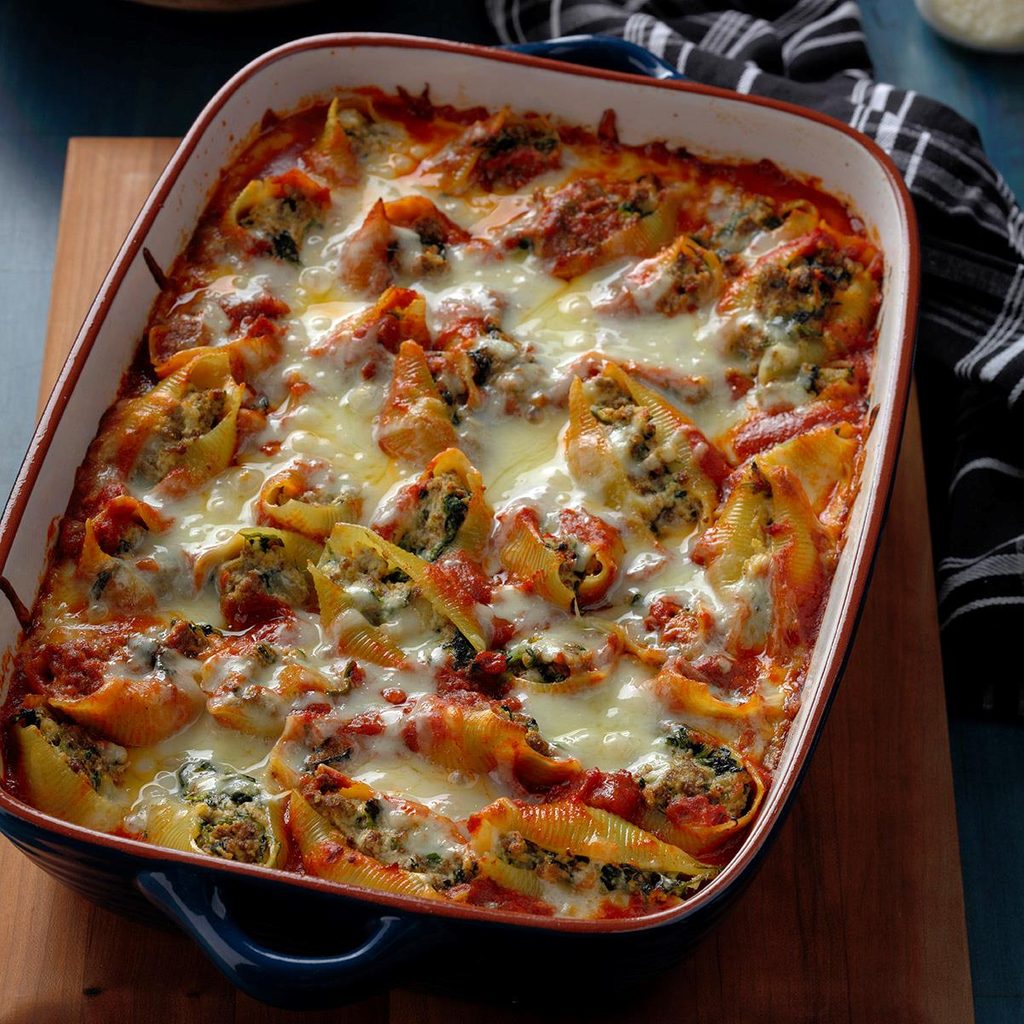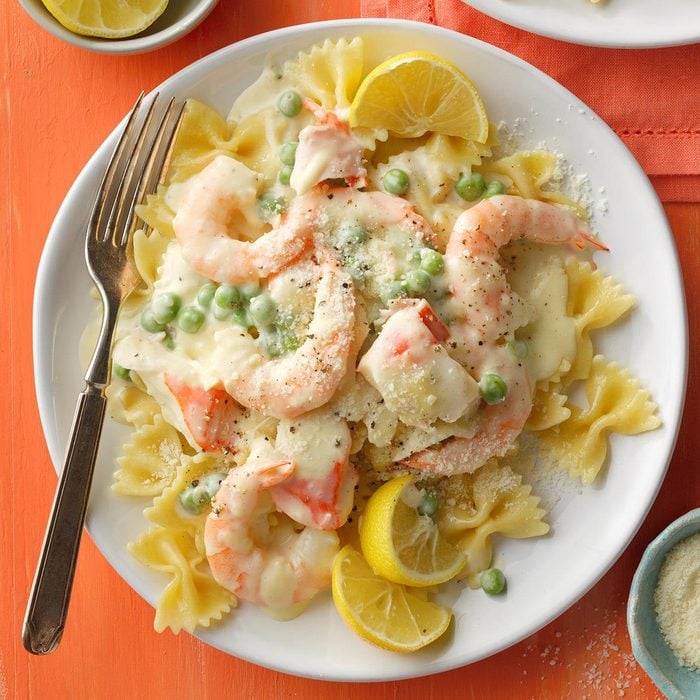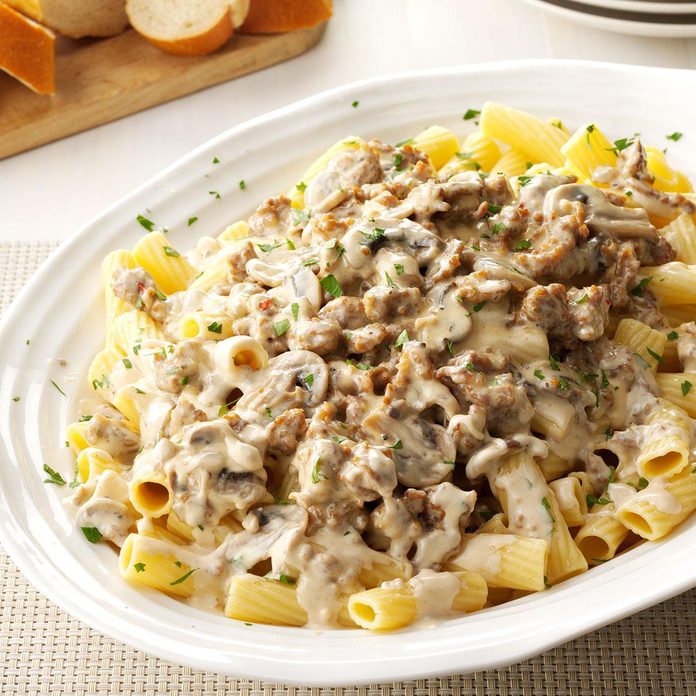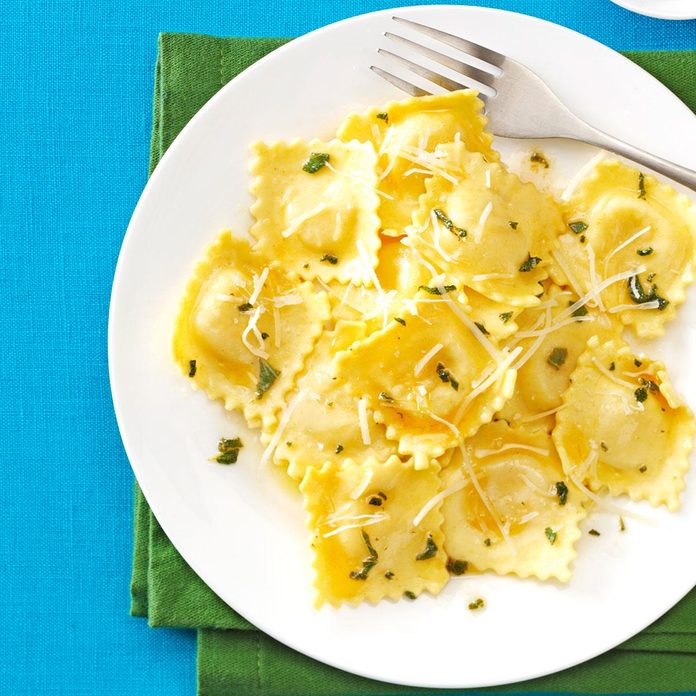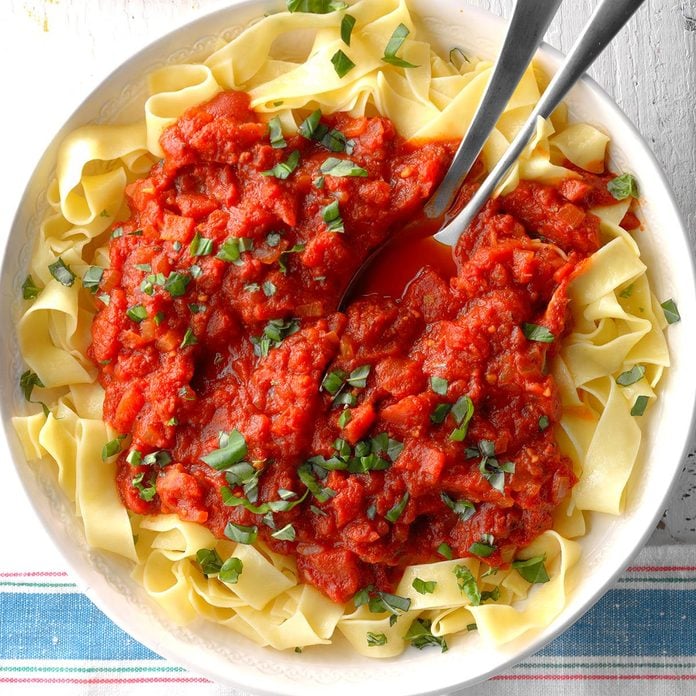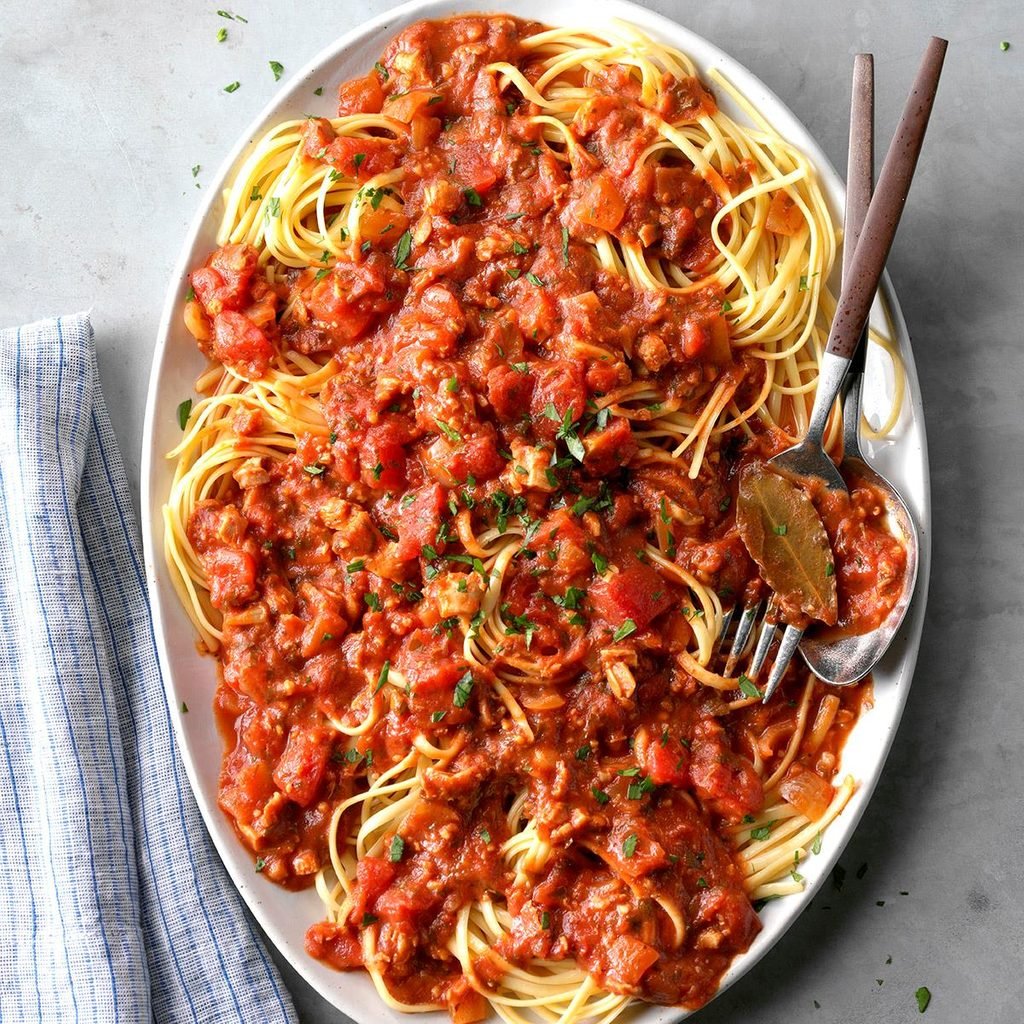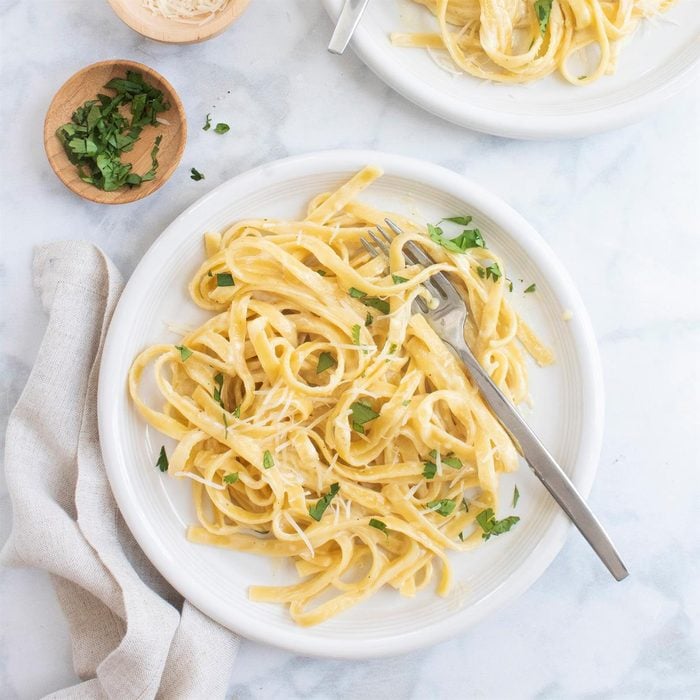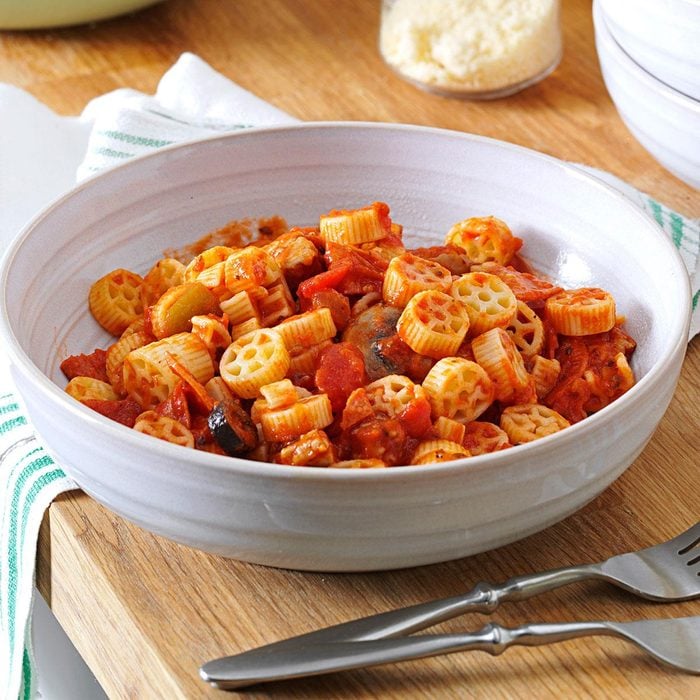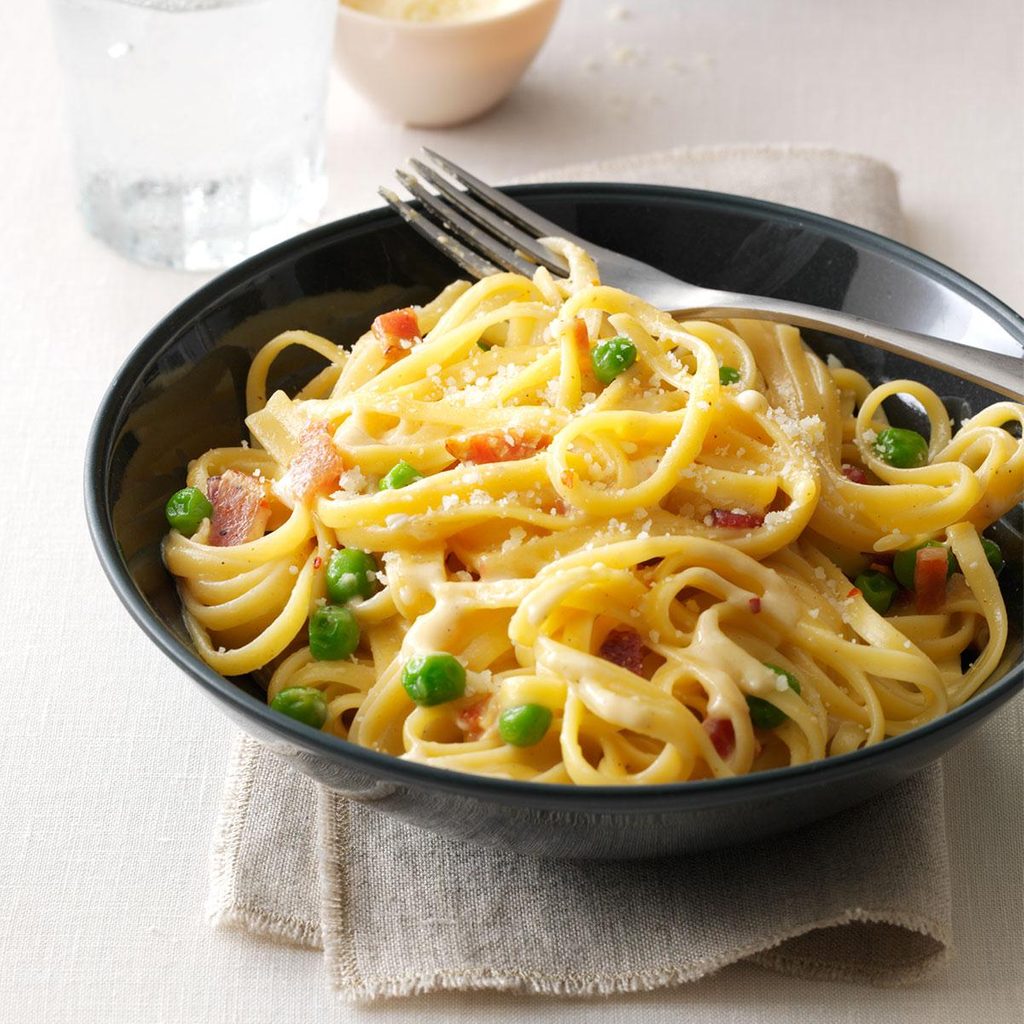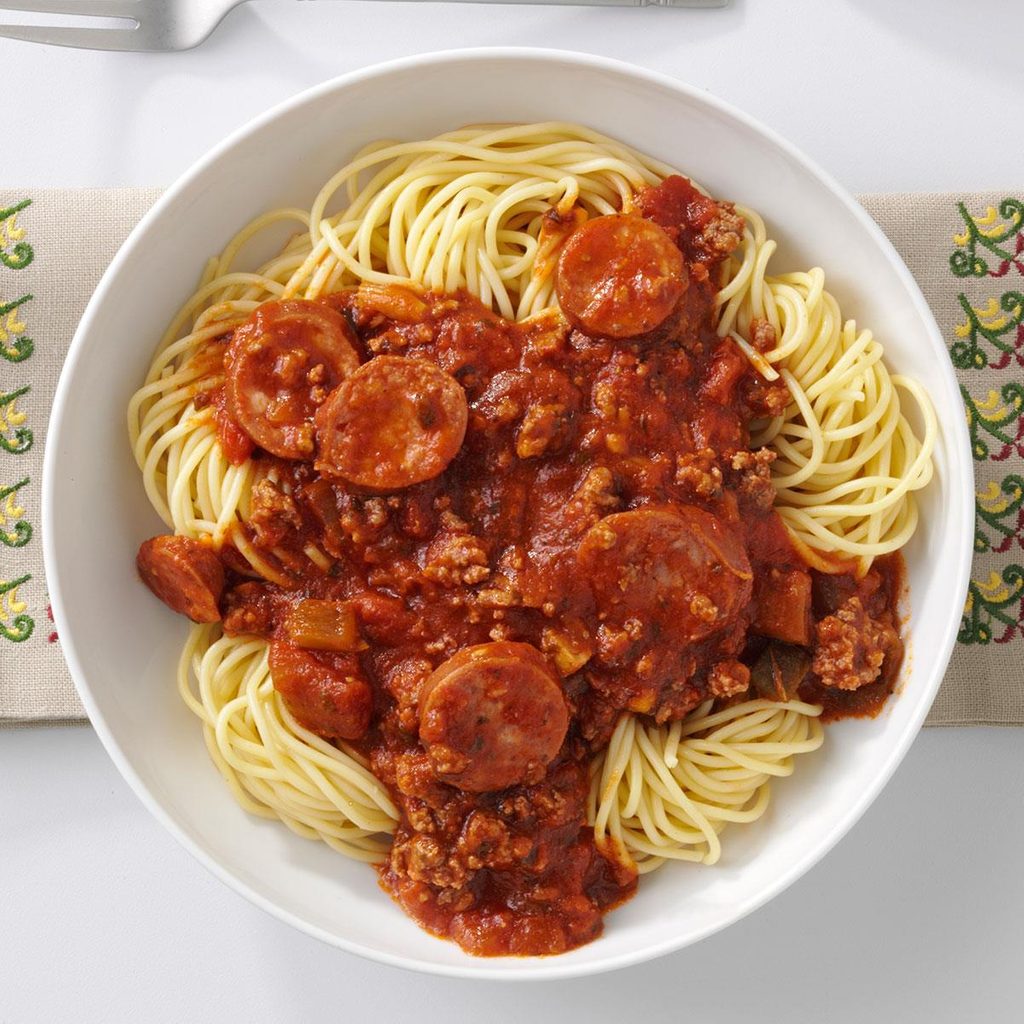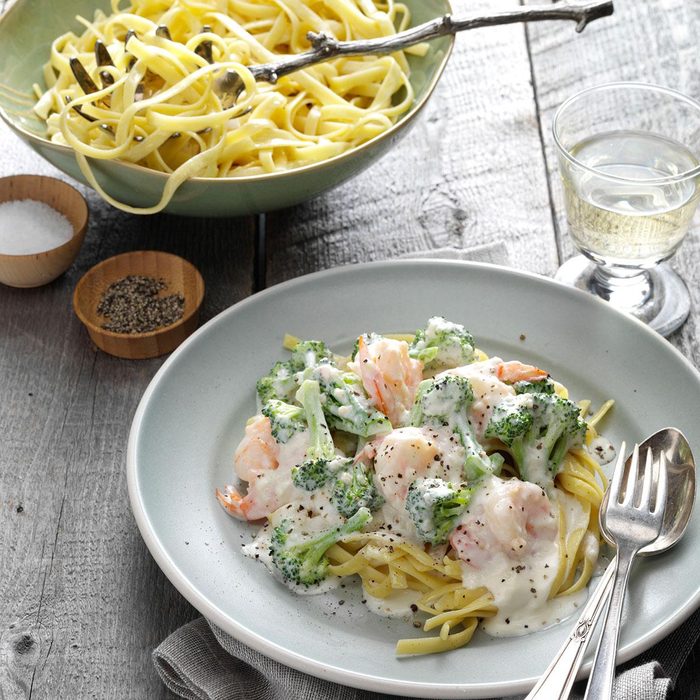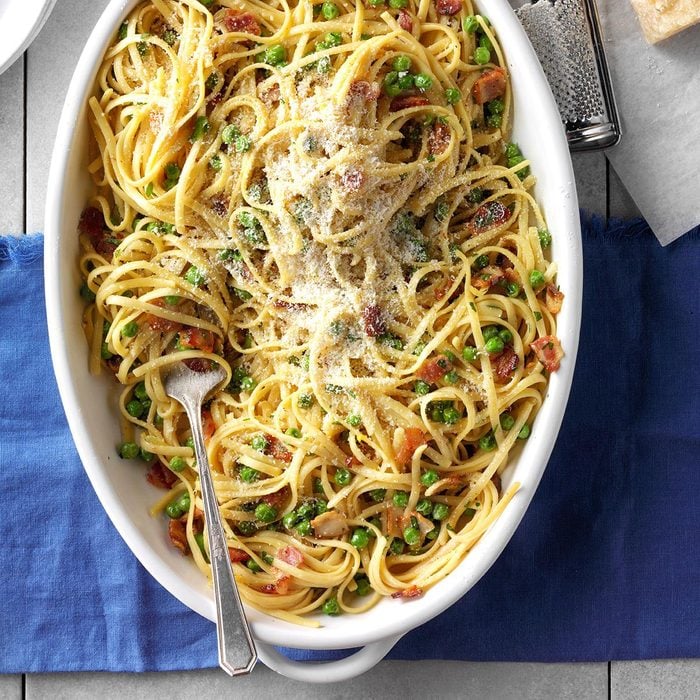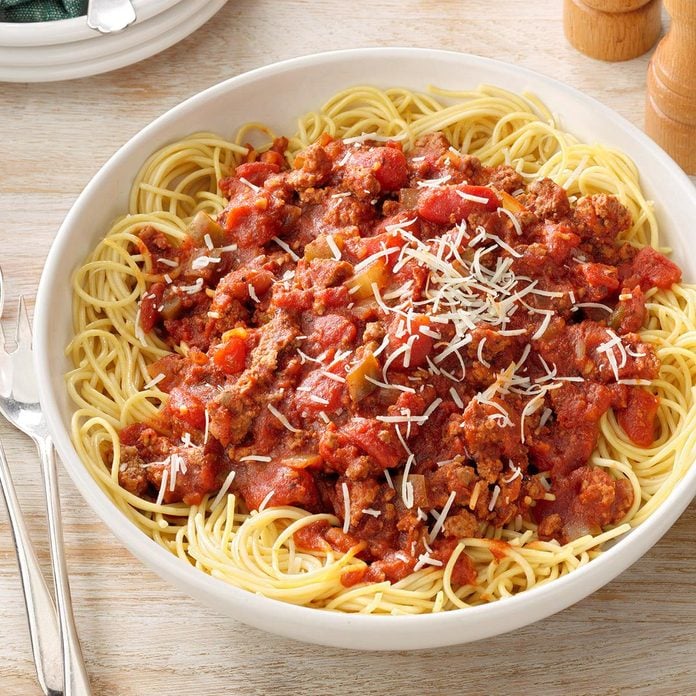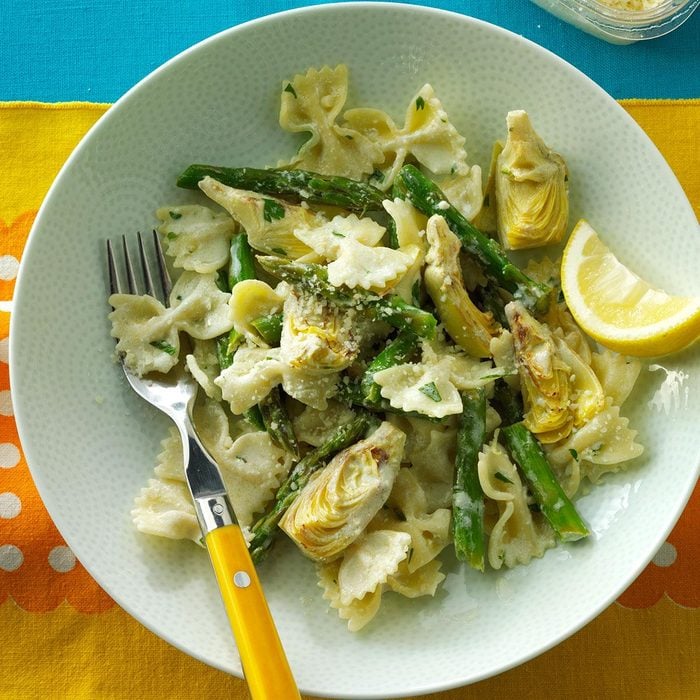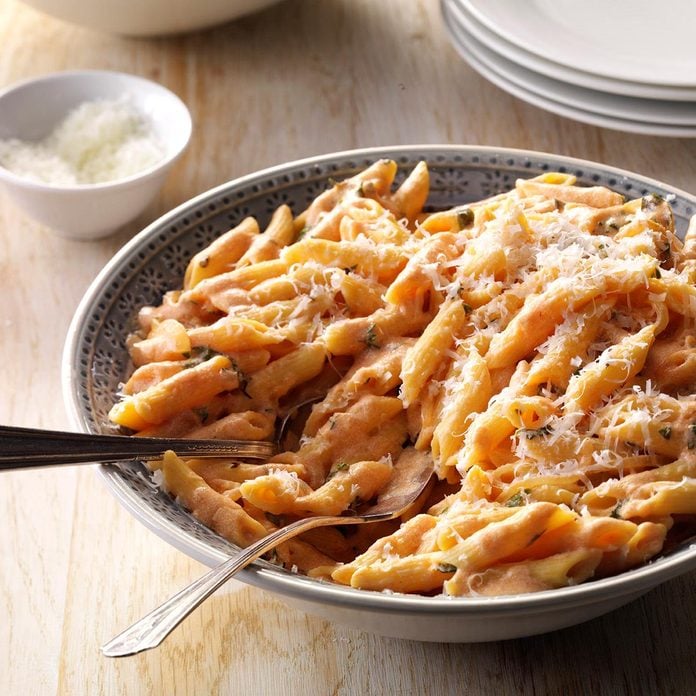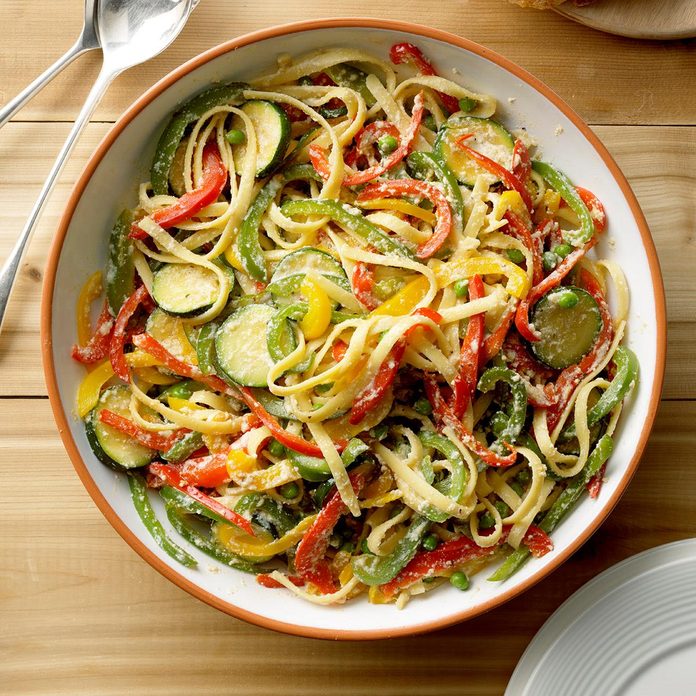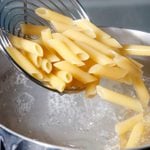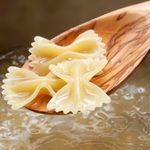I grew up eating dried pasta, so it wasn’t until much later in life that I considered the debate of fresh pasta vs. dry pasta. Specialty grocery stores weren’t really a thing in the ’80s, and my mother certainly didn’t have time to make pasta from scratch. So we stocked up on dried spaghetti, fettuccine and any tube noodle that worked for making casseroles. It wasn’t until I went to culinary school that I fell in love with homemade pasta. Its rich flavor and luscious texture lured me in, and I spent hours practicing and kneading until I could make pasta with my eyes closed.
Today, you don’t even need to put in the work to enjoy fresh pasta: It’s available in the refrigerated section at most grocery stores. But, despite my love of fresh pasta, I’ve learned it’s not necessarily better than dry pasta. Both are worthy of a restaurant-quality meal—the one you choose depends on the pasta sauce you pair it with.
What’s the Difference Between Fresh and Dry Pasta?
Fresh or dry pasta can be used in any recipe, but they have different flavors and textures that will affect the final dish. Here are the major differences between the two to help you decide which to use.
Fresh Pasta vs. Dry Pasta: Ingredients
Dry pasta is made with water, semolina (a type of flour made from durum wheat) and sometimes egg. The ingredients are mixed together to create a crumbly dough. The dough is then pressed through an extruder fitted with a die to create the desired pasta shape, forming anything from long noodles to curly macaroni or tube-shaped ziti. Once formed, the pasta is dried for several days until the moisture evaporates, creating a shelf-stable product that’s good for several years.
Fresh pasta, on the other hand, is made with eggs and flour, usually a specialty type of flour called “00” flour. It also contains water or olive oil, and sometimes extra ingredients (like pureed spinach or spices like paprika) are added to give the dough a vibrant color. The dough is kneaded and passed through a cutting machine, or it can be hand-cut for rustic-style pasta. Because fresh pasta contains perishable ingredients, it must be cooked immediately or stored in the refrigerator.
When making fresh pasta, you’ll need to cook about 2 ounces per person. With dried pasta, it’s sometimes easier to use a cup measurer per person. Here’s our chart showing how much pasta per person you should make.
Fresh Pasta vs. Dry Pasta: Texture
Dry pasta is often cooked al dente, which means “to the tooth” in Italian. That gives dry pasta a tender-firm texture that’s perfectly chewy, and it holds up well to hearty sauces. Of course, if you continue to boil dry pasta past the al dente stage, it will eventually become soft and mushy, so you can choose the desired level of texture based on your preference.
Fresh pasta doesn’t give you any options when it comes to texture. In general, it’s smoother and softer than dried pasta, and it’s not possible to cook it to the al dente stage. Because the pasta isn’t dried through to the center, these noodles cook through in a matter of minutes, creating a uniform finish inside and out. The end result is a soft, springy texture.
Fresh Pasta vs. Dry Pasta: Cooking Time
Dry pasta cooking time depends on the size and shape. Most pasta takes 10 to 12 minutes, but thin pasta like angel hair may be done in as little as 8 minutes. Refer to the cooking instructions on the box and taste the pasta about 2 minutes before the timer expires. If it’s tender enough to chew but still contains a bit of a bite, you’ve reached al dente. If it’s too firm for your liking, continue cooking it until it reaches the preferred level of doneness.
Fresh pasta cooks much, much more quickly! Depending on the pasta’s thickness, it may be done in less than 2 minutes. Watch for the noodles to begin floating to the top of the pot. To check for doneness, bite into a noodle and look for a tiny white dot in the center. If you see it, continue cooking until it disappears, testing another noodle every 20 seconds.
Wondering how to keep those noodles from sticking? Check out our tips for how to make spaghetti noodles not stick, including dusting fresh noodles with flour (speaking of, did you know flour expires?) before dropping them in the boiling water.
Fresh Pasta vs. Dry Pasta: Storage and Shelf Life
When stored in a cool, dark place like a cupboard or pantry, dry pasta doesn’t ever really expire. The drying process removes all the moisture from the pasta, preventing it from attracting bacteria that lead to mold. That said, it tastes its freshest when used within two years of purchase.
How long does fresh pasta last? Typically, fresh pasta doesn’t have a very long shelf life. Store-bought fresh pasta is usually good for two to three days, but homemade pasta only lasts for one day in the refrigerator. If you need more time, transfer the fresh pasta to the freezer, drying it in a single layer on a baking sheet for 15 minutes before transferring the pasta to freezer-safe bags. In the freezer, it will stay good for about eight months.
Fresh Pasta vs. Dry Pasta: Where to Buy
Dried pasta is available at any grocery store. We recommend looking at the ingredients on the back of the box and avoiding any pasta that includes preservatives or stabilizers. If the packaging mentions bronze dies, the pasta was made the traditional Italian way, and the edges will be rougher to help the sauce cling to the noodles.
Fresh pasta used to be a specialty item only available at select stores, but today you can find it in the refrigerated section of most grocery stores. It’s also sold online from retailers. Avoid packaging with moisture inside, which can lead to mushy or moldy pasta. You’ll want to check the best-by date, too, before hitting the checkout.
When to Use Dry Pasta
It’s best to use dry pasta with rich, hearty sauces, like a pasta puttanesca dish or a thick, meaty ragu. That’s because dry pasta can be cooked al dente, giving the pasta a chewy bite and thick texture that holds up to these hearty sauces. Dry pasta is also ideal for casseroles and soups because it can hold up to the extended cooking time.
That said, it’s absolutely fine to use fresh pasta with rich sauces. Thick-cut homemade egg noodles are a perfect pairing for a classic bolognese, and fresh linguine will hold up fine to a seafood puttanesca. On the flip side, if your recipe calls for fresh pasta, feel free to use dry pasta if you don’t have the fresh variety on hand. For these recipes, we recommend cooking the dry pasta for the amount of time listed on the box. When they’ve reached the al dente stage, add them to the pan with the sauce and simmer the noodles in the sauce for a minute or two to help them reach a similar texture to fresh pasta.
When to Use Fresh Pasta
Fresh pasta shines with delicate sauces that accentuate its eggy flavor and chewy texture. Think carbonara, cacio e pepe or pasta tossed with simple sauces like butter, marinara or pesto. Using fresh pasta with a store-bought Alfredo sauce is an excellent way to elevate the canned sauce to something that tastes like it simmered away all day.
We don’t recommend using fresh pasta in baked recipes or anything that makes leftovers. Meal prepping for the week works well with dry pasta, but fresh pasta will fall apart in the refrigerator, turning into a gummy mess when it’s reheated. It’s best to use it for tonight’s meal and plan to have something else for lunch tomorrow.
Our Best Homemade Pasta Sauce Recipes
 TMB Studio
Penne alla Vodka
TMB Studio
Penne alla Vodka
This easy and impressive pasta is always on the menu when my husband and I have new friends over for dinner. Years later, they've asked me to make this Penne alla Vodka recipe again. —Cara Langer, Overland Park, Kansas
Get Recipe
Looking for something a little lighter? Try these
healthy pasta sauce recipes.
Simple Pasta SauceThis is a simple pasta sauce that you can use for more than just spaghetti. Puree this recipe for pizza sauce or a great dipping sauce. I also like to make a variation for bruschetta by omitting the olive oil, using fire-roasted diced tomatoes and simply combining the uncooked ingredients. Refrigerate for at least two hours before serving on toasts. —Deborah Markwood, Chester, Virginia
Want to try something new tonight? Mix up one of these
vegan pasta sauce recipes.
Homemade Fettuccine AlfredoThis easy Alfredo sauce is creamy, comforting and coats fettuccine noodles in fine fashion. This recipe is wonderful as is, but sometimes I like to add sliced fresh mushrooms and black olives that have been sautéed in butter and garlic. —Jo Gray, Park City, Montana
Yum! For more sauce recipes, tips and tricks, check out our
ultimate guide to pasta sauce.
Classic PestoThis versatile pesto boasts a perfect basil flavor. Pair it with pasta (or one of these creative
recipes using pesto and you've got a delicious dinner. —Iola Egle, Bella Vista, Arkansas. Try this delicious
pesto pasta recipe.
Beef Bolognese with LinguineAfter much research, tasting and tweaking, I finally came up with this beef bolognese recipe, based on a dish from an Italian restaurant where I worked. It’s perfect for feeding a house full of guests. —Christine Wendland, Browns Mills, New Jersey
Here are the other famous
types of pasta sauces that you need to try now.
MarinaraMy mother, who was Italian American, called marinara sauce "gravy." She made this marinara sauce recipe in big batches several times a month, so it was a staple on our dinner table. A mouthwatering aroma filled the house each time she cooked it. —James Grimes, Frenchtown, New Jersey
Homemade Canned Spaghetti SauceDIY canning spaghetti sauce recipes are a tomato grower's dream come true! Use up your garden bounty and enjoy it later in the year. —Tonya Branham, Mt. Olive, Alabama
Tortellini with Tomato-Cream SauceThis tortellini with tomato cream sauce is mouthwatering. Put spinach, tomatoes and other pantry staples to use in this warm and satisfying dish. —Barbra Stanger, West Jordan, Utah
Stamp-of-Approval Spaghetti SauceMy father is very opinionated, especially about food. This recipe received his almost unreachable stamp of approval. I have yet to hear a disagreement from anyone who has tried it! —Melissa Taylor, Higley, Arizona
Homemade Alfredo SauceWhen I found out I had celiac disease and could no longer have fettuccine Alfredo, I was determined to figure out a way to re-create it. This has now become one of my most-requested dishes. I use gluten-free multigrain pasta, but you can use any style of pasta. —Jackie Charlesworth Stiff, Frederick, Colorado
Mushroom Bolognese with Whole Wheat PastaA traditional Bolognese sauce is meat-based with everything from pork to pancetta. Skipping the meat, I loaded this pasta dish with baby portobellos and veggies. —Amber Massey, Argyle, Texas
Spaghetti Meatball SupperIt was such a joy to come home and find my mom making spaghetti and meatballs for dinner. This recipe has always been dear to my heart. —Debbie Heggie, Laramie, Wyoming
Mushroom Pasta CarbonaraI absolutely love this creamy and cheesy mushroom carbonara. I serve it with a side salad and rolls to make a complete meal. —Cindi Bauer, Marshfield, Wisconsin
Meat Sauce for SpaghettiHere's a thick, hearty meat sauce for spaghetti for a filling feast. When I'm in a hurry, I make this slow-cooker recipe in an electric frying pan instead. —Mary Tallman, Arbor Vitae, Wisconsin
Stuffed Shells with Arrabbiata SauceThis Italian classic takes on a distinctive Latin American flourish with the addition of chorizo. The sausage adds an extra kick and awesome flavor to a dish that's already a favorite. —Crystal McDuffy, Fairfax, Virginia.
Seafood AlfredoMy guests usually can't believe I prepared this meal myself. The rich, creamy main dish features plenty of seafood flavors with a hint of garlic and lemon. Frozen peas and a jar of Alfredo sauce make it a simple supper that will be requested time and again. —Melissa Mosness, Loveland, Colorado
Creamy Sausage-Mushroom RigatoniIn Rome, we dined near the Pantheon. The amazing restaurant is now history, but its memory lives on in this tasty pasta with mushrooms and sausage. —Barbara Roozrokh, Brookfield, Wisconsin
Sage & Browned Butter RavioliAfter enjoying a similar dish in Italy, we came home and planted sage in our garden to be sure we could recreate the brown butter sage sauce. This quick and easy dinner always brings back fond memories of our trip. —Rhonda Hamilton, Portsmouth, Ohio
Homemade Meatless Spaghetti SauceWhen my tomatoes ripen, the first things I make are BLTs and this homemade spaghetti sauce. —Sondra Bergy, Lowell, Michigan
Red Clam SauceThis recipe tastes like an Italian restaurant specialty and cooks while you take care of other things. What a marvelous way to jazz up pasta sauce! —JoAnn Brown, Latrobe, Pennsylvania
Quick Fettuccine AlfredoThis simple fettuccine Alfredo recipe combines heavy whipping cream Parmesan and Romano cheese or a creamy, cheesy sauce that'll come together in minutes. —Jo Gray, Park City, Montana
For another easy option, learn
how to make simple pasta sauce.
Pizza-Flavored Pasta SauceI’ve been cooking since I was 6 years old and I’m always watching for recipes my friends and family will love. So when I tasted an unforgettable spaghetti sauce at a local restaurant, I just had to make my own version. —Angelina Falzarano, Midlothian, Texas
Light Linguine CarbonaraWhen we have to rush off at night, I make this speedy pasta with veggies and bacon. Serve with breadsticks or garlic toast, and dinner's done. —Mary Jo Miller, Mansfield, Ohio
Super Spaghetti SauceAt my house, we never know how many we'll have for dinner. That's why this spaghetti sauce is one of my favorites - flavorful, filling and fast. Smoked kielbasa gives it depth, and salsa adds the kick. —Bella Anderson, Chester, South Carolina
Broccoli Shrimp AlfredoAfter tasting fettuccine Alfredo at a restaurant, I came up with this shrimp Alfredo with broccoli version at home. Not only does my family love the creamy dish, but my husband prefers it to the one at the restaurant. —Rae Natoli, Kingston, New York
Authentic Pasta CarbonaraI learned on my culinary internship in Tuscany that real Italian cuisine is simpler than you think! This carbonara is quick, simple and delicious, just the way they like it in Italy. —Lauren Brien-Wooster, South Lake Tahoe, California
Meaty Spaghetti SauceMy homemade spaghetti sauce got rave reviews, but it was so time-consuming to make on the stovetop. My family loves this flavorful slow-cooker version. —Arlene Sommers, Redmond, Washington
Artichoke & Lemon PastaWhile sailing in the Mediterranean, we tasted a lemony artichoke pasta. I developed my own version of it that our guests love. Try it with shrimp and kalamata olives. —Peter Halferty, Corpus Christi, Texas
Blushing Penne PastaI reworked this recipe from an original that called for vodka and heavy whipping cream. My friends and family had a hard time believing a sauce this rich, flavorful and creamy could be light. —Margaret Wilson, Hemet, California
Pepper Ricotta PrimaveraGarlic, peppers and herbs top creamy ricotta cheese in this meatless skillet meal you can make in just 20 minutes. —Janet Boulger, Botwood, Newfoundland and Labrador
Looking for the
best pasta recipes? Look no further these incredible 5-star dishes.
